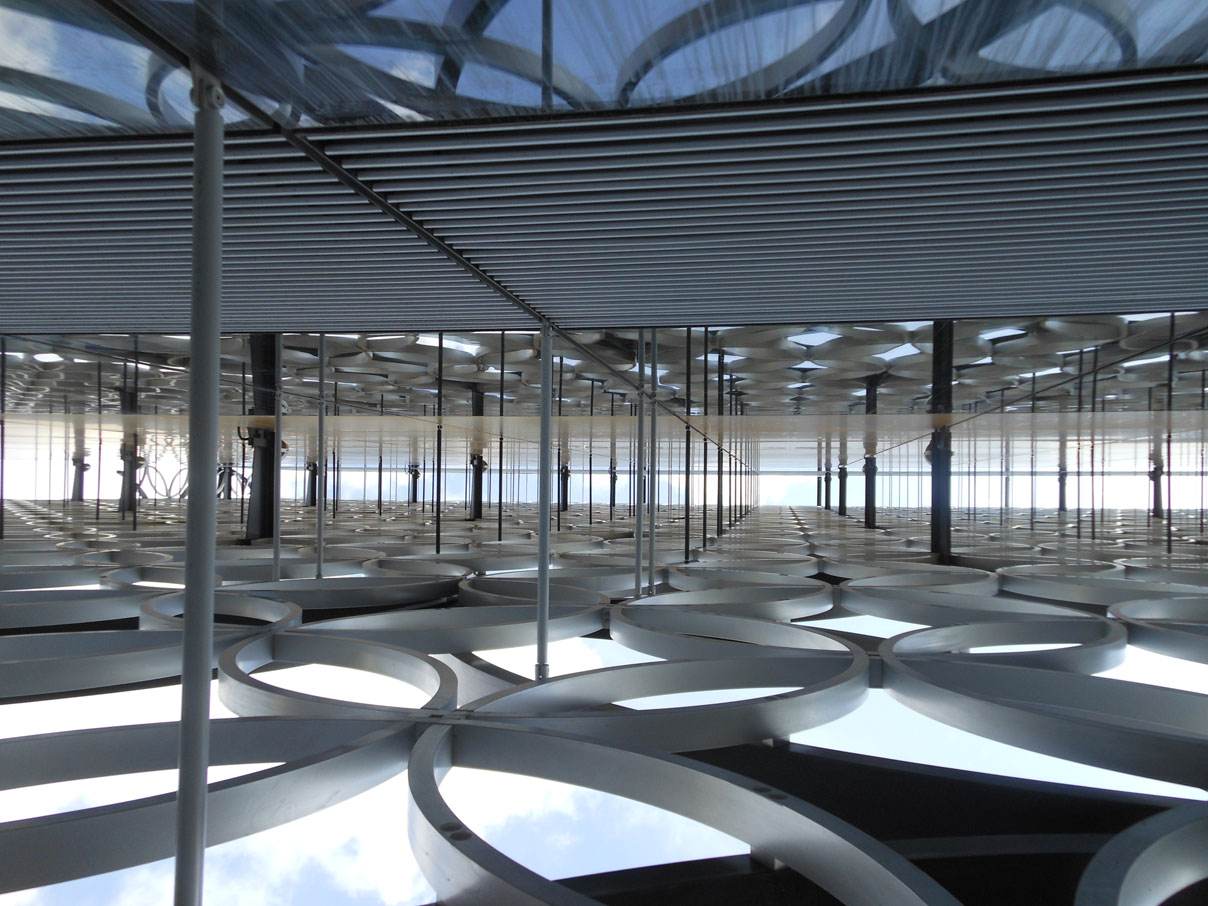A new library opening prompts twenty-first century questions: what is the role of the library in the digital age? Wherefore books? Who now reads what, where? Despite what you may have heard, the paperless library is still a long way off.
Birmingham’s numerous city libraries over the last 150 years reflect the city’s lack of sentimentality about its past: you can now practically renew libraries over the phone. The current regeneration is nearly complete: you can take a look for yourself from next Tuesday. I had a guided tour last week from Mecanoo’s Patrick Arends and the space is amazing. I’ve been reserving judgement on the building for the last few years, feeling it’s only fair to see the interior of a building before forming an opinion on the building as a whole. I’d also like to see it working as a library before completely deciding. There have been many times since 2007 when it has been hard not to become annoyed by the new building: its encroachment into the civic square (itself very recent) seemed invasive and seeing the townscape of the Centenary Square broken up by the towering new building is a jarring moment. The gradual erosion of civic space is painful too: the land occupied by Central Library is being sold to a private company, as happened with Baskerville House. Awful rumours about there being less shelf space than the previous library were later confirmed. Meanwhile community libraries were losing staff and reducing their service – even brand new libraries like Shard End.

Of course, none of this is mentioned in the introductory presentation and indeed it isn’t the place to discuss it. The LoB team demonstrate their clear excitement about the project, and are now itching to share it. Mecanoo’s creative director Francine Houben describes it as an Ode to the Circle that should be seen as a (yeep) People’s Palace. After we’ve been given some shaky local info (Baskerville House is a “1920s building” and Birmingham is “Europe’s youngest city”) we’re ready to go. Things are still being installed and unpacked but there’s no getting around the fact that this is a wildly ambitious, astonishing space. Ascending through its various caverns, corridors and plateaux really is the journey Houben suggests it is. At no point is it obvious where the building you are, and in a library this is a good thing. As was said of John Madin’s windowless edifice: “a library is a window”. There are many moments I can’t work out what I’m seeing. And it’s a thrill that all this is a library: to put learning, reading and research to Birmingham’s fore in this way, after a long period of being marginalised at the expense of commercial spaces, is a reassuring, hopeful moment.
We encounter a huge digital clock counting down to the opening, largely unnoticed. Intriguing art installations, grand amphitheatres, sweeping garden terraces and snappy Eurostyle seating lounges are everywhere. A central “book rotunda” surely echoes in negative Birmingham’s most famous circular building, rather than the stated inspiration of the Saltley gasometers. The escalators too work on many levels.

At this pre-public moment it’s somehow pleasing to guess which parts of the building’s clean white surfaces, graceful arcades and sheet windows will be first to become dirty or chipped. And which department will be first to blu-tack up a Please Turn You’re Mobile Of notice? This is the time to recruit a full-time slickness tsar. I ask our guide Patrick about the nearly invisible Library of Birmingham sign that we can just make out from the subterranean amphitheatre. It’s in Francine Houben’s handwriting but is nearly unreadable in amongst the arcs and filigree. This he says is so it doesn’t become boring after you have seen it a few times – an explanation that makes no sense. But then, the library is all about discovery.
“Discovery” is also the name of the opening season of events, curated by Capsule founder Lisa Meyer. Capsule’s programming has always been adventurous and you should check out their programme. For the LoB managers to choose possibly the noisiest, most experimental arts organisation in the city to open a library is a radical step. It’s like something Manchester would do. This is a genuinely a crucial moment for the city. Manchester wasn’t always perceived as an independently cultural destination: all that fell into place after the council elected to actively champion local music (even Acid House) alongside more obvious reasons to visit, like football or shopping. Let’s see what happens, this is exciting!
A sad note to all of this is the fate of old Central Library. Beyond the loss of a key piece of C20th architecture and the public space falling into private hands, is the lost opportunity for some genuinely radical and forward-thinking architecture to happen. However impressive and iconic the LoB is, it’s a resolutely twentieth century experience. The way we will have to think about new buildings in terms of their cost, energy use and drain of materials will soon have to change. A truly iconic C21st new building would involve the adventurous recycling of the old one in recognition of where things are inevitably heading. If no longer usable as a library, then it could have become something else the public could use: a multi level public park, the Tate Birmingham or a music venue of Berlinesque proportions. Perhaps we as a city aren’t quite ready to make such gestures.

